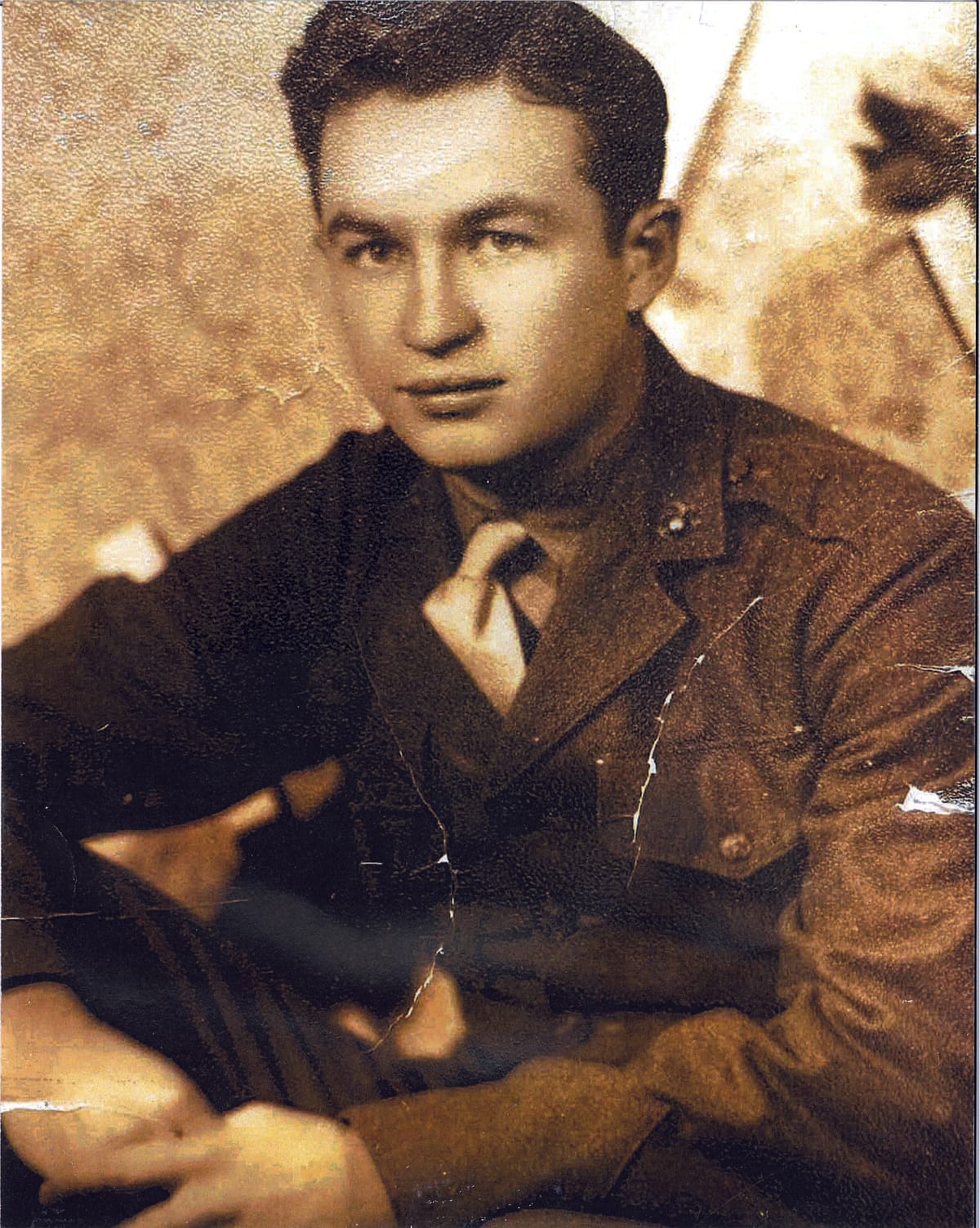
This year marks the 80th anniversary of the end of World War II, the bloodiest military conflict in human history. In only six years, an estimated 70 to 85 million people perished worldwide, half of which were civilian causalities, from September 1, 1939 to September 2, 1945. American men fighting overseas in Europe, Asia and North Africa accounted for over 400,000 deaths.
The National World War II Museum, located in New Orleans, Louisiana, quotes that of the 16.4 million American men and women who served, only 45,418 (less than .5%) remain living today. As time lunges forward, that number continues dwindling—the United States Department of Veteran Affairs (VA) claims that roughly 119,000 World War II veterans were alive as of 2023, representing a staggering 62% decrease in just two years. According to projections from the National World War II Museum, the total number of living World War II veterans will likely plummet to 5,000 by 2030.
As the museum notes, “Every day, memories of World War II—its sights and sounds, its terrors and triumphs—disappear.” Opportunities to hear stories from this illustrious generation are fading quickly. Only 261 World War II veterans live in Montana, down from 758 in 2023—the eighth lowest amongst all states, according to the VA. One such man, who turns 101 years old in less than a month, resides on Main Street in downtown Livingston.
Ken Spalding was born in Livingston on December 3, 1924. His father Walter, who was an avid fisherman, originally moved from Maryland to North Dakota, where he met Ken’s mother Ethel, then relocating to Livingston for a job working on the railroad.
“I’ve lived here all my life except when I joined the military,” says Spalding, who spent his childhood summers roaming Paradise Valley on foot and by train searching for fishing holes along the Yellowstone River—just a handful of years prior to the Nazi invasion of Poland.
Shortly after turning 18 years old, Spalding sacrificed his high school education and enlisted in the United States Marine Corp on January 1, 1943—nearly 13 months following the deadly assault by Japan on United States naval base Pearl Harbor, the catalyst for American involvement in the Second World War. Prior to joining, Ken had rarely, if ever, stepped foot outside of Livingston. He set off for boot camp in San Diego before joining the Marine Air Corps, transferring to Norman, Oklahoma, for specialized training on aircraft engines and radios.
Eventually stationed at Cherry Point and Camp Lejeune, located in southeastern North Carolina—two of the largest Marine Corps bases on the east coast—Ken underwent training as a top turret gunner on a B25 aircraft, practicing with ground and aerial artillery (.30 and .50 caliber machine guns mounted to trailers and cockpits) on base and over the Atlantic Ocean. He flew on a Consolidated PBY Catalina—an American patrol bomber flying boat prominently used by the United States Navy during World War II—and practiced bombing drills with AN-MK23 and AN-MK5s—mild, non-explosive devices equipped with 10-gauge shotgun shells designed to produce smoke on impact.
The U.S. military, however, scaled back on bombing before Ken could take his new skills to task. His next assignment after departing the Marine Air Corps and transferring back to infantry would find him in the South Pacific, assisting the war effort against Japan. Many of his friends, he says, were deployed to Okinawa and Iwo Jima—some doomed to suffer a grim fate.
Before deploying, Ken, now a corporal, briefly returned to San Diego for further training and visited Pearl Harbor, where he witnessed damage from the fateful attack on December 7th, 1941. There he boarded a ship and set sail for Guam. Upon arrival, Japanese forces occupying the island had surrendered. Ken and his crew were on damage control, defending the base from retaliation by any remaining militants.
He and his regiment then spent a short stint in Saipan retrieving a squadron of fellow Marines before sailing to the China Sea. While awaiting deployment to Honshu, Japana in a floating platoon of nearly 1,500 ships, the first and second atomic bombs had been dropped on Nagasaki and Hiroshima, effectively ending the war. In short order those ships dispersed throughout Southeast Asia to places like Qingdao, China, where Ken spent the final 11 months of his military career with the famed Seventh Fleet.
Following the war, United States Marines supported the Chinese National Party against the Chinese Communist Party and remaining Japanese Imperialists to regain control over Northern China. “I remember seeing bomb fires in the mountains surrounding Qingdao,” he recalled. “I stood on a parade field to honor Chiang Kai-shek before he fled to Formosa,” he continued. Kai-shek was chairman for the Republic of China prior to its demise at hands of Mao Zedong in 1949.
Following the war, Ken returned to the United States and was discharged from the military in 1946, a sailor traveling home from San Diego via bus, first landing in Bozeman. Sea bag slung over his shoulder, he thumbed down a ride back to Livingston, where his family lived above Gallatin Street. Ken married his late wife, Peggy Payne, in 1947, and had two children, Gerald (Jerry) and Carol. Beginning in 1972, he worked as a mail carrier and retired with the United States Postal Service after 25 years, earning a pension for his service. Winning two 6-year terms, he also served on the Park County commission from 1974 to 1986.
Devoted to his community, Spalding coached youth basketball and football, and refereed basketball games throughout Montana for 20 years.
Ken’s wife and son died in 1998 and 1999, respectively. His daughter Carol, granddaughter Katie, and great-granddaughter Kayla all reside in Bozeman. He lives above the Park County Senior Center at 206 S. Main Street in Livingston.

